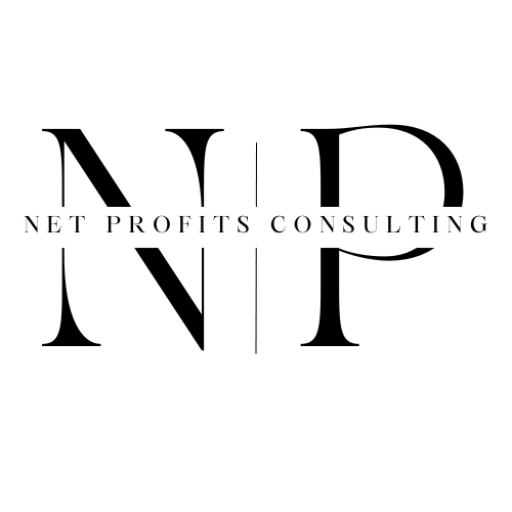Unlock Your Business Potential
Our curated stack for family-owned businesses—streamlining operations, boosting marketing, and keeping your books clean.
Running a family-owned business means wearing a lot of hats—owner, operator, bookkeeper, marketer, HR, and sometimes even delivery driver. The right software simplifies those roles so you can spend more time serving customers and less time wrestling with spreadsheets. This page lists tools we’ve vetted across bookkeeping, payroll, CRM, marketing, and project management. We prioritize clarity, low learning curve, and ROI. Every pick here solves a common small-business pain: scattered tasks, slow invoicing, messy receipts, poor reporting, or inconsistent marketing.
Below you’ll find an easy filterable list of our favorite platforms, followed by a practical buying guide and FAQs. If you’re just getting started, start with QuickBooks for accounting, monday.com for workflows, and a reputable password manager like 1Password. As you grow, add CRM (Close), payroll (Gusto), and automation for receipts (Shoeboxed) or e-commerce syncing (Synder).
Small-Business Software Buying Guide
Choosing tools should be a strategy decision, not a shiny-object chase. Use this simple framework to evaluate each platform before you buy:
1) Problem → Outcome → Metric
Define the exact pain and how you’ll measure success. Example: “Invoices are late; I want 95% paid within 15 days; I’ll track average days-to-pay.” If a tool can’t move a metric you care about, it’s probably noise.
2) Time to Value & Learning Curve
How quickly can a non-technical team member set it up and see value? We favor tools with guided onboarding, templates, and clear dashboards. For example, monday.com ships with boards that mirror real-world processes; QuickBooks offers bank rules and pre-built reports to shortcut monthly close.
3) Total Cost of Ownership
Price is more than the monthly fee. Consider admin time, add-ons, and integrations. A $30 tool that replaces two $15 tools and saves four hours a month is a win. Also check annual billing discounts and seat limits. For payroll, factor tax filings and support quality—this is where Gusto stands out.
4) Integrations & Data Portability
Your stack should share data. Examples: Synder bridges Shopify/Amazon to QuickBooks; Shoeboxed forwards categorized receipts; WhatConverts attributes calls/leads back to campaigns; Close centralizes email/SMS/calls in your CRM so nothing falls through the cracks.
5) Security & Ownership
Use strong password practices from day one. 1Password and Passpack both support team sharing with granular permissions. Keep a quarterly export habit: CSVs for accounting and lists for CRM/marketing to ensure you always control your data.
Starter Stacks by Stage
- Solo / Side Hustle: QuickBooks, Shoeboxed (receipts), monday.com Lite board, 1Password.
- Growing Team (3–10): Add Gusto (payroll), Close (CRM), WhatConverts (attribution), Outgrow (lead gen).
- Product + Service Mix: Synder (e-com sync), MRPeasy (manufacturing), Office Timeline (client reporting).
- Restaurant / Foodpreneur: QuickBooks, Shoeboxed, monday.com ops board, Gusto payroll; add Castmagic for repurposing content.
Mini Reviews: Why These Made the List
QuickBooks: Industry standard, clean bank feeds, strong reporting. Great for tax prep and lender conversations.
monday.com: Visual workflows that keep teams aligned; repeatable templates for ops, content, and client projects.
Close (CRM): Built-in calling, SMS, and email make follow-up automatic. Excellent search and saved views.
Gusto: Payroll + benefits with compliance handled; friendly onboarding and employee self-service.
Synder: Accurate e-commerce accounting via channel sync; dramatically reduces manual reconciliations.
Shoeboxed: Scans and categorizes receipts—perfect for audit trails and mileage logs.
WhatConverts: Links calls, forms, and chat back to campaigns so you know which ads generate revenue.
Office Timeline: Client-ready timelines/Gantt charts directly in PowerPoint; huge for presentations and status updates.
Buddy Punch: Time tracking and scheduling that flow into payroll—cuts admin hours and reduces errors.
Implementation Tips
- Adopt a weekly review: bank feeds, unpaid invoices, overdue tasks, pipeline follow-ups.
- Create SOPs for data entry (naming, tags, categories) so reports stay reliable.
- Start with 1–2 tools per quarter. Depth beats breadth.
- Track a simple ROI metric per tool (hours saved, DSO, conversion rate, show-up rate, etc.).
Frequently Asked Questions
Do I need all of these tools to start?
No. Start lean: accounting, a password manager, and a lightweight task board cover 80% of early needs. Layer CRM, payroll, and marketing once your processes are stable.
How do I budget for software without overspending?
Cap tools at a fixed % of revenue and require each one to earn its keep via a measurable KPI. If a tool doesn’t move a metric in 60–90 days, downgrade or cancel.
Which tools are best for restaurants and food trucks?
QuickBooks for accounting, Shoeboxed for receipts, Gusto for payroll, and monday.com for prep lists and scheduling. Add Close if you’re doing catering or B2B outreach.
Can I switch from spreadsheets to software mid-year?
Yes. Do a clean cutover at month-end, import opening balances, and keep the spreadsheet as an archive. Reconcile the first month carefully to validate the setup.
How do I keep my data secure as I grow?
Use 1Password/Passpack for team sharing, enable 2FA everywhere, and schedule quarterly exports. Limit admin roles and review app permissions during staff changes.
How does Net Profits choose recommendations?
Hands-on testing, client outcomes, support quality, and transparent pricing. We only recommend tools we’d be comfortable using in our own business.
Affiliate Disclosure
Some links above are affiliate links. If you click and make a purchase, we may receive a commission at no extra cost to you. We only recommend products and services we believe provide value.

